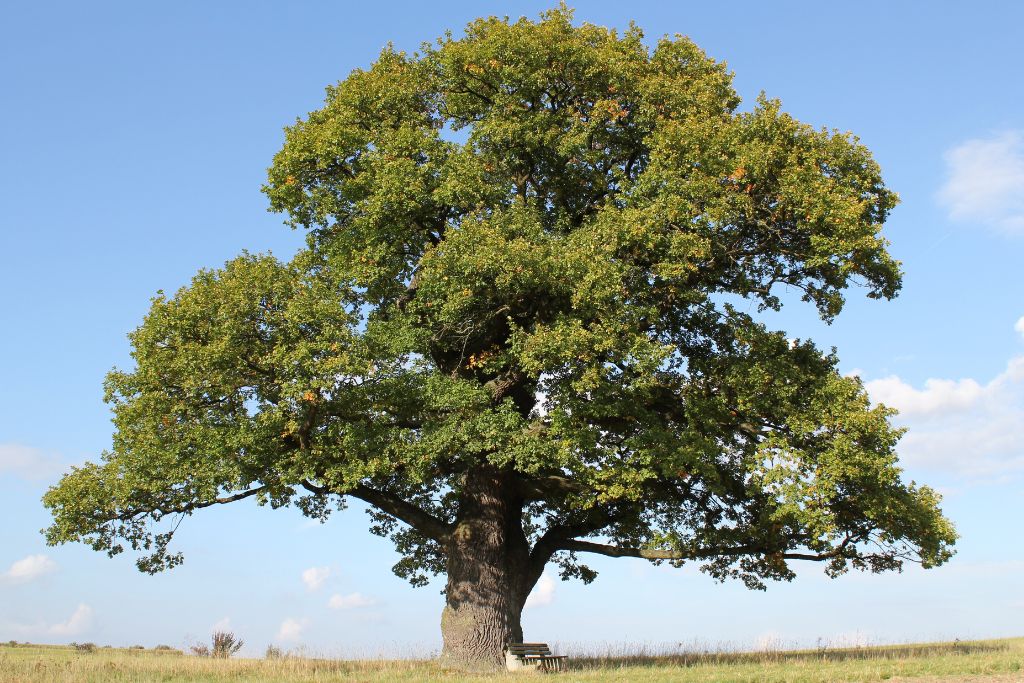Blog, Tree Identification
Tree Of The Month: The Willow Oak
It’s a tree native to the St. Louis area, and though you may never have heard of it, you may just want to get to know about it. The willow oak is a medium to large member of the red oak family, and in many ways is ideally suited to the environment and growing conditions associated with St. Louis and the rest of Missouri. 
Do Willow Oaks Look Like Willows, Or Oaks?
Willow oaks are medium to large trees, reaching 40 to 75 feet in height, in some cases growing to nearly 100 feet. These trees feature a rounded or oval crown, and a generally oak like shape. However, its leaves are longer and narrower than those of oak and much like willow leaves. The willow oak is a deciduous tree, with its leaves turning yellow brown or dull gold in the fall.
The willow oak produces rounded acorn cups – which can be a food source for wildlife – and features small yellow-green flowers in the spring. Its dense canopy can provide substantial shade from spring through fall.
Where Do They Grow Best?
While willow oaks thrive in conditions common to the southeastern U.S. – which largely features warmer winter temperatures than typically found in the St. Louis area and throughout Missouri – they are native to Missouri and grow quite well throughout the state.
In nature, they are often found in moist, yet well-drained soils often found in wooded areas bordering swamps or in river valleys. Willow oaks like sunlight but will easily tolerate light shade. The harsh winter conditions that occur in Missouri can be a challenge for the willow oak, though saplings or seeds coming from northern sources deal with snow and ice rather well.
How Hardy Are Willow Oaks?
Willow oaks – like many species of oak – are susceptible to a significant number of diseases. Oak wilt, chestnut blight, shoestring root rot, anthracnose, oak leaf blister, cankers, leaf spots and powdery mildew are all common issues with willow oaks. In addition, insects such as oak skeletonizer, leaf miner, galls, lace bugs, various borers, caterpillars and nut weevils all target willow oaks.
Still, the willow oaks exhibit strong resistance to these threats and are in most cases a fast-growing, hardy and low-maintenance species.
How Should Willow Oaks Be Used In Landscaping?
With its dense canopy, willow-like leaves and impressive height and spread, the willow oak is an excellent choice in a variety of landscaping scenarios.
They make excellent shade trees for large lawns, where they also thrive due to the maximum available sunlight. They also grow well and offer look like a natural fit when grown on the banks of ponds and in water gardens, where they have access to moist soil, particularly in warmer temperatures.
They’re also an excellent choice for homeowners who want to develop their landscaping in a comparatively short period of time, as they usually grow at a faster rate than do other species.
Is The Willow Oak Right For You And Your Home? Consult With The Experts At Hansen’s Tree Service Today!
Our certified arborists are experts at assessing which species of tree best meets a homeowner’s objectives and environment. Their extensive experience with hundreds of tree species can make a crucial difference when it comes to helping you decide which trees are right for you. Chances are that the willow oak is just one of many trees that will help you beautify and get the most out of your property.
Contact us today and let our insured, experienced professionals take care of all your tree-related needs!
